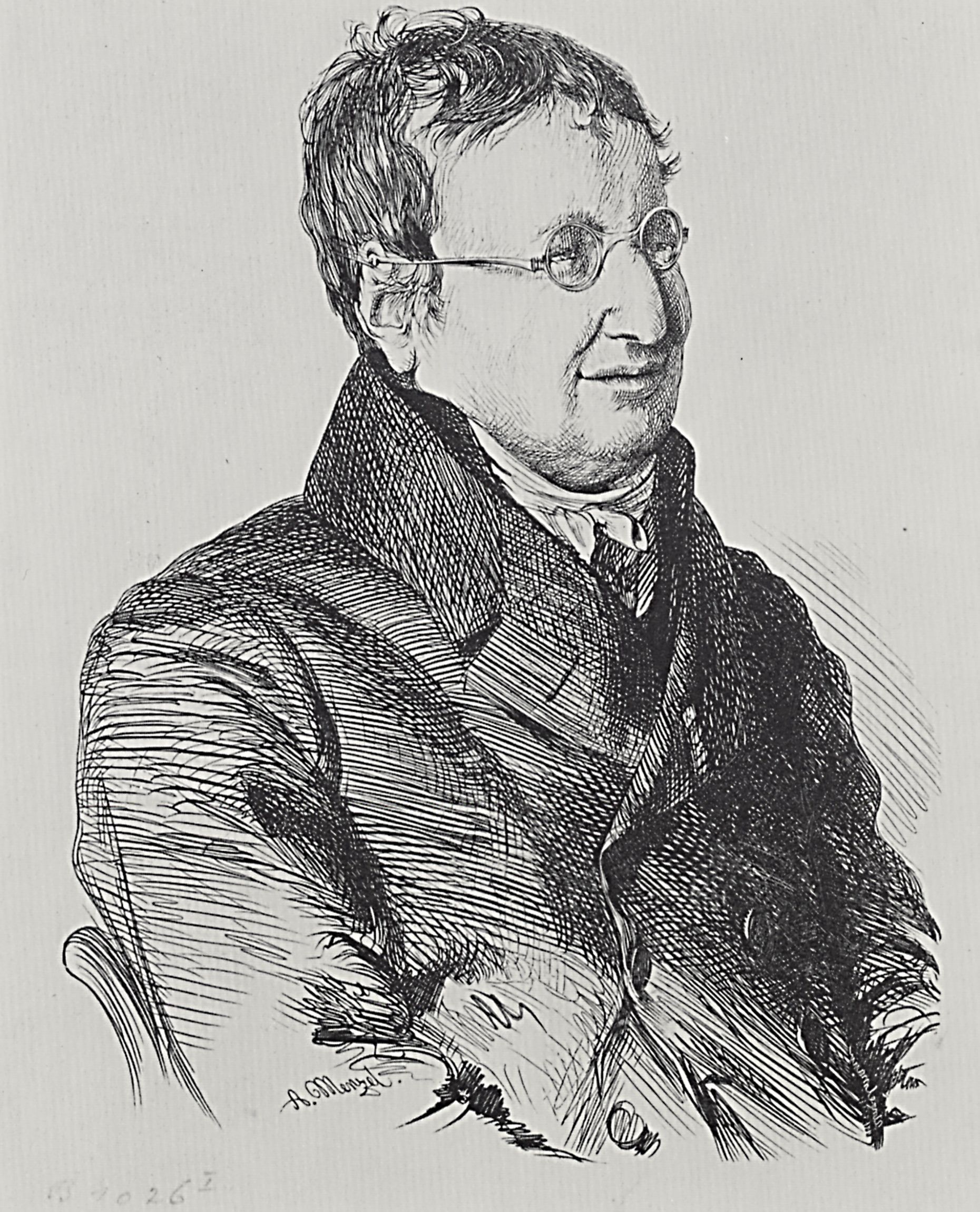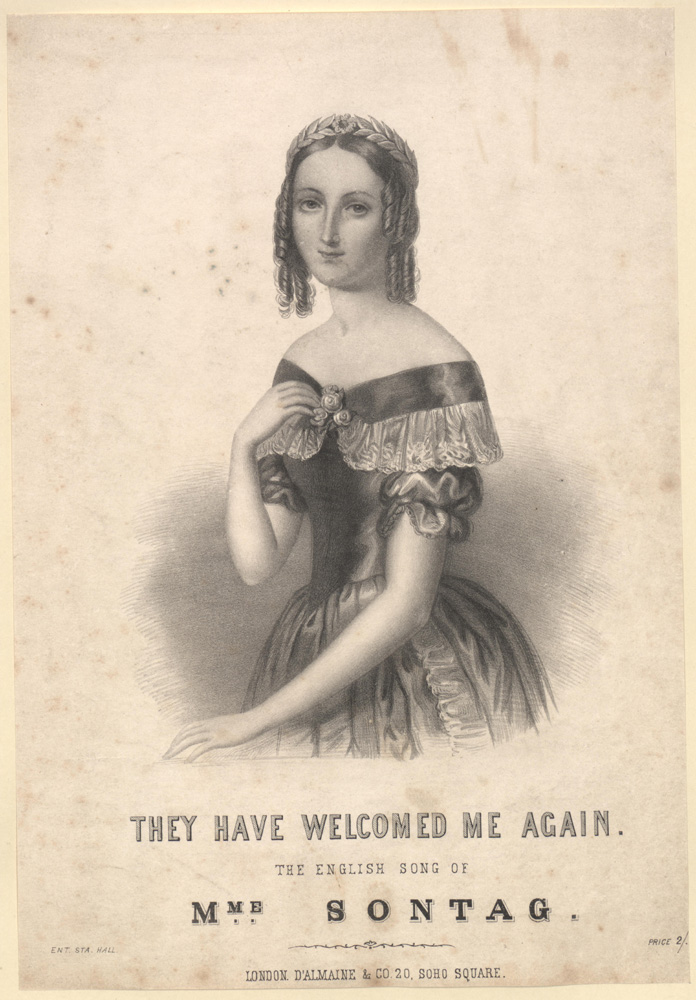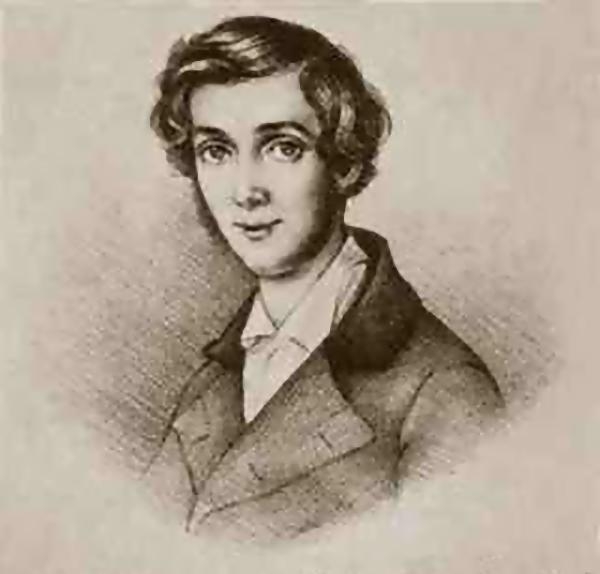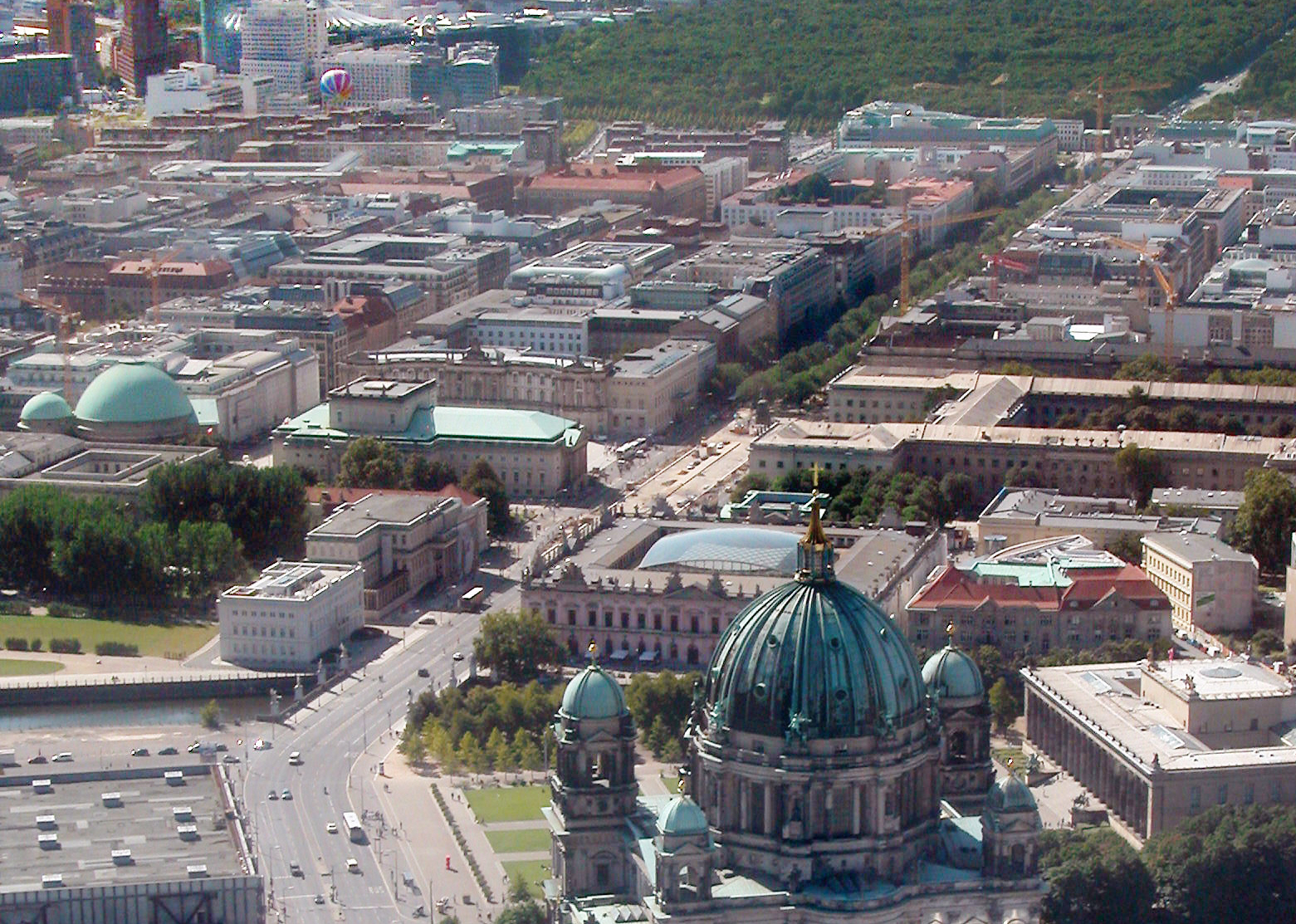|
Tunnel über Der Spree
''Der Tunnel über der Spree'' was a German literary society based in Berlin, founded on 3 December 1827 by Moritz Gottlieb Saphir. Most active between 1840 and 1860, it acquired 214 members and influenced literary life in Berlin for more than seventy years. Saphir had been denied membership of Julius Eduard Hitzig's new Wednesday Society. He invited the actors Friedrich Wilhelm Lemm and Ludwig Schneider to his home and founded a "Sunday Society" to compete with it. Its motto was ''Ungeheure Ironie und unendliche Wehmut'' and its mascot was Till Eulenspiegel. To avoid confusion with fanclubs of the singer Henriette Sontag, the name was changed to "Tunnel over the Spree," a topical reference to Isambard Kingdom Brunel's tunnel under the Thames, which would lead to an abortive effort to create a similar tunnel in Berlin. In fact, the first Berlin tunnel did not open until 1899, the year after the demise of the society. Theodor Fontane, an important source of information on the soci ... [...More Info...] [...Related Items...] OR: [Wikipedia] [Google] [Baidu] |
Moritz Gottlieb Saphir
Moritz Gottlieb Saphir, born Moses Saphir (8 February 1795 in Lovasberény near Székesfehérvár – 5 September 1858 in Baden bei Wien) was an Austrian-Jewish satirical writer and journalist. Life Saphir was the son of the merchant Gottlieb (Israel) Saphir and his wife Charlotte Brüll. During the reign of Joseph II, all Jewish subjects had been required to take a family name, and Israel Saphir was the first in the family to use that surname. Moses was sent to the yeshiva in Bratislava to become a rabbi. At the age of eleven, he fell out with his family and made a risky journey to Prague to attend that city's yeshiva instead. Shortly afterwards he encountered mainstream European literature and began to study English, German, and the Romance languages. In 1814, his family removed all financial support and he was forced to return home. Nevertheless he was allowed some time later to travel to Pest, Hungary in order to study Latin and Greek. It was in Pest that he embarked on a lite ... [...More Info...] [...Related Items...] OR: [Wikipedia] [Google] [Baidu] |
Julius Eduard Hitzig
Julius Eduard Hitzig (born ''Isaac Elias Itzig''; 26 March 1780 in Berlin – 26 November 1849 in Berlin) was a German author and civil servant. Born into the wealthy and influential Jewish Itzig family, he was between 1799 and 1806 a Prussian civil servant, became Criminal Counsel at the Berlin Supreme Court in 1815 and its director in 1825. In 1808 he established a publishing house and later a bookstore. Hitzig was much involved in the Berlin literary life of his period, notably in connection with the salon of Rahel Varnhagen. He was friendly with E.T.A. Hoffmann, August von Kotzebue, Adelbert von Chamisso, Friedrich de la Motte Fouqué and Willibald Alexis. He was lampooned for his name change by Heinrich Heine. His works include ''"Der Neue Pitaval"'' (several volumes). See also *Itzig family Many of the thirteen children of Daniel Itzig and Miriam Wulff, and their descendants and spouses, had significant impact on both Jewish and German social and cultural (especially m ... [...More Info...] [...Related Items...] OR: [Wikipedia] [Google] [Baidu] |
Friedrich Wilhelm Lemm
Friedrich may refer to: Names *Friedrich (surname), people with the surname ''Friedrich'' *Friedrich (given name), people with the given name ''Friedrich'' Other *Friedrich (board game), a board game about Frederick the Great and the Seven Years' War * ''Friedrich'' (novel), a novel about anti-semitism written by Hans Peter Richter *Friedrich Air Conditioning, a company manufacturing air conditioning and purifying products *, a German cargo ship in service 1941-45 See also *Friedrichs (other) *Frederick (other) *Nikolaus Friedreich Nikolaus Friedreich (1 July 1825 in Würzburg – 6 July 1882 in Heidelberg) was a German pathologist and neurologist, and a third generation physician in the Friedreich family. His father was psychiatrist Johann Baptist Friedreich (1796–1862) ... {{disambig ja:フリードリヒ ... [...More Info...] [...Related Items...] OR: [Wikipedia] [Google] [Baidu] |
Louis Schneider (actor)
Louis Schneider (born Ludwig Wilhelm Schneider: 29 April 1805 – 16 December 1878) was a German actor and author. Biography Schneider was born in Berlin, the son of George Abraham Schneider (1770–1839). At an early age he was engaged at the Royal Theatre, Berlin, where he soon rose to play leading comedy parts. His reputation as a comedian grew with his success in such roles as Zierl in the ''Einfahrt vom Lande'', Peter in the ''Kapellmeister von Venedig'', Schikaneder in his own revision of Mozart's ''Der Schauspieldirektor'' and Basilio in ''Le Nozze di Figaro'', and he became the favourite of Berlin. In 1845 he was appointed head of the Royal opera in Berlin. The same year he adapted Mozart's singspiel ''Der Schauspieldirektor'', replacing Gottlieb Stephanie's libretto with his own which included the characters of Mozart, Emmanuel Schikaneder, Mozart's sister-in-law Aloysia Lange among others. Schneider's version was first performed in Berlin on 25 April 1845.Alfred Loewen ... [...More Info...] [...Related Items...] OR: [Wikipedia] [Google] [Baidu] |
Till Eulenspiegel
Till Eulenspiegel (; nds, Dyl Ulenspegel ) is the protagonist of a German chapbook published in 1515 (a first edition of ca. 1510/12 is preserved fragmentarily) with a possible background in earlier Middle Low German folklore. Eulenspiegel is a native of the Duchy of Brunswick-Lüneburg whose picaresque career takes him to many places throughout the Holy Roman Empire. He plays practical jokes on his contemporaries, at every turn exposing vices. His life is set in the first half of the 14th century, and the final chapters of the chapbook describe his death from the plague of 1350. Eulenspiegel's surname translates to "owl-mirror"; and the frontispiece of the 1515 chapbook, as well as his alleged tombstone in Mölln, Schleswig-Holstein, render it as a rebus comprising an owl and a hand mirror. It has been suggested that the name is in fact a pun on a Low German phrase that translates as "wipe-arse".From the Middle Low German verb ''ulen'' ("to wipe") and ''spegel'' ("mirror"), ... [...More Info...] [...Related Items...] OR: [Wikipedia] [Google] [Baidu] |
Henriette Sontag
Henriette Sontag, born Gertrude Walpurgis Sontag, and, after her marriage, entitled Henriette, Countess Rossi (3 January 1806 – 17 June 1854), was a German operatic soprano of great international renown. She possessed a sweet-toned, lyrical voice and was a brilliant exponent of florid singing. Life Sontag was born at Koblenz, Germany, as Gertrude Walpurgis Sontag, to the actor Franz Sontag and his wife, the actress Franziska Sontag ( Martloff; 1788–1865). Her brother was the actor Karl Sontag. She made her début at the age of 6. In 1823 she sang at Leipzig in Carl Maria von Weber's ''Der Freischütz'' and in December of that year created the title role in his ''Euryanthe''. Her success was immediate. She was invited to be the soprano soloist in the first performances of Beethoven's Symphony No. 9 and ''Missa Solemnis'' on 7 May 1824; she was only 18 years old at the time. In 1825 she was engaged by the Königstädter Theater, Berlin.Warrack (n.d.) In 1826, she was engaged ... [...More Info...] [...Related Items...] OR: [Wikipedia] [Google] [Baidu] |
Isambard Kingdom Brunel
Isambard Kingdom Brunel (; 9 April 1806 – 15 September 1859) was a British civil engineer who is considered "one of the most ingenious and prolific figures in engineering history," "one of the 19th-century engineering giants," and "one of the greatest figures of the Industrial Revolution, hochanged the face of the English landscape with his groundbreaking designs and ingenious constructions." Brunel built dockyards, the Great Western Railway (GWR), a series of steamships including the first propeller-driven transatlantic steamship, and numerous important bridges and tunnels. His designs revolutionised public transport and modern engineering. Though Brunel's projects were not always successful, they often contained innovative solutions to long-standing engineering problems. During his career, Brunel achieved many engineering firsts, including assisting in the building of the first tunnel under a navigable river (the River Thames) and the development of the , the first ... [...More Info...] [...Related Items...] OR: [Wikipedia] [Google] [Baidu] |
Theodor Fontane
Theodor Fontane (; 30 December 1819 – 20 September 1898) was a German novelist and poet, regarded by many as the most important 19th-century German-language realist author. He published the first of his novels, for which he is best known today, only at age 58 after a career as a journalist. Fontane's novels are known for their complex, often sceptical view of society in the German empire; he shows different social and political parts of society meeting and sometimes clashing. Other trademarks of Fontane's work are their strongly drawn female characters (such as ''Effi Briest'' and ''Frau Jenny Treibel''), tender irony and vivid conversations between characters. Life Youth Fontane was born in Neuruppin, a town 30 miles northwest of Berlin, into a Huguenot family. At the age of sixteen he was apprenticed to an apothecary, his father's profession. He became an apothecary himself and in 1839, at the age of 20, wrote his first work (''Heinrichs IV. erste Liebe'', now lost). His ... [...More Info...] [...Related Items...] OR: [Wikipedia] [Google] [Baidu] |
Emanuel Geibel
Emanuel von Geibel (17 October 18156 April 1884) was a German poet and playwright. Life Geibel was born at Lübeck, the son of a pastor. He was originally intended for his father's profession and studied at Bonn and Berlin, but his real interests lay not in theology but in classical and romance philology. In 1838 he accepted a tutorship at Athens, where he remained until 1840. In the same year he published, in conjunction with his friend Ernst Curtius, a volume of translations from Greek. His first poems were published in a volume entitled ''Zeitstimmen'' in 1841. In 1842 he entered the service of Frederick William IV, the king of Prussia, with an annual stipend of 300 thalers; under whom he produced ''König Roderich'' (1843), a tragedy, ''König Sigurds Brautfahrt'' (1846), an epic, and ''Juniuslieder'' (1848), lyrics in a more spirited and manlier style than his early poems. In 1851, Geibel was invited to Munich by Maximilian II of Bavaria as an honorary professor at the univer ... [...More Info...] [...Related Items...] OR: [Wikipedia] [Google] [Baidu] |
St Hedwig's Cathedral
St. Hedwig's Cathedral (german: St.-Hedwigs-Kathedrale) is a Catholic church on Bebelplatz in the historic centre of Berlin. Dedicated to Hedwig of Silesia, it was erected from 1747 to 1887 by order of Frederick the Great according to plans by Georg Wenzeslaus von Knobelsdorff in Baroque style. Damaged during the Allied bombing in World War II, the cathedral of the Archdiocese of Berlin was restored from 1952 to 1963 in post-war modernist style as part of the Forum Fridericianum. Since 2018, the listed building has been closed for renovation. History and architecture St. Hedwig's Church was built in the 18th century following a request from local parishioners to King Frederick II. He donated the land on which the church was built.''St.Hedwigs Kathedrale Berlin : History''. Available at: http://www.hedwigs-kathedrale.de/en/hedwigs-kathedrale/history (Accessed: 19 October 2016) The church was dedicated to the patron of Silesia and Brandenburg, Saint Hedwig of Andechs. It was ... [...More Info...] [...Related Items...] OR: [Wikipedia] [Google] [Baidu] |
Unter Den Linden
Unter den Linden (, "under the linden trees") is a boulevard in the central Mitte district of Berlin, the capital of Germany. Running from the City Palace to Brandenburg Gate, it is named after the linden (lime in England and Ireland, not related to citrus lime) trees that line the grassed pedestrian mall on the median and the two broad carriageways. The avenue links numerous Berlin sights, landmarks and rivers for sightseeing. Overview Unter den Linden runs east–west from the site of the Stadtschloss royal palace (main residence of the House of Hohenzollern) at the Lustgarten park, where the demolished Palace of the Republic once stood, to Pariser Platz and Brandenburg Gate. Eastward the boulevard crosses the Spree river at Berlin Cathedral and continues as Karl-Liebknecht-Straße. The western continuation behind Brandenburg Gate is Straße des 17. Juni. Major north–south streets crossing Unter den Linden are Friedrichstraße and Wilhelmstrasse. Unter den Linden, w ... [...More Info...] [...Related Items...] OR: [Wikipedia] [Google] [Baidu] |







